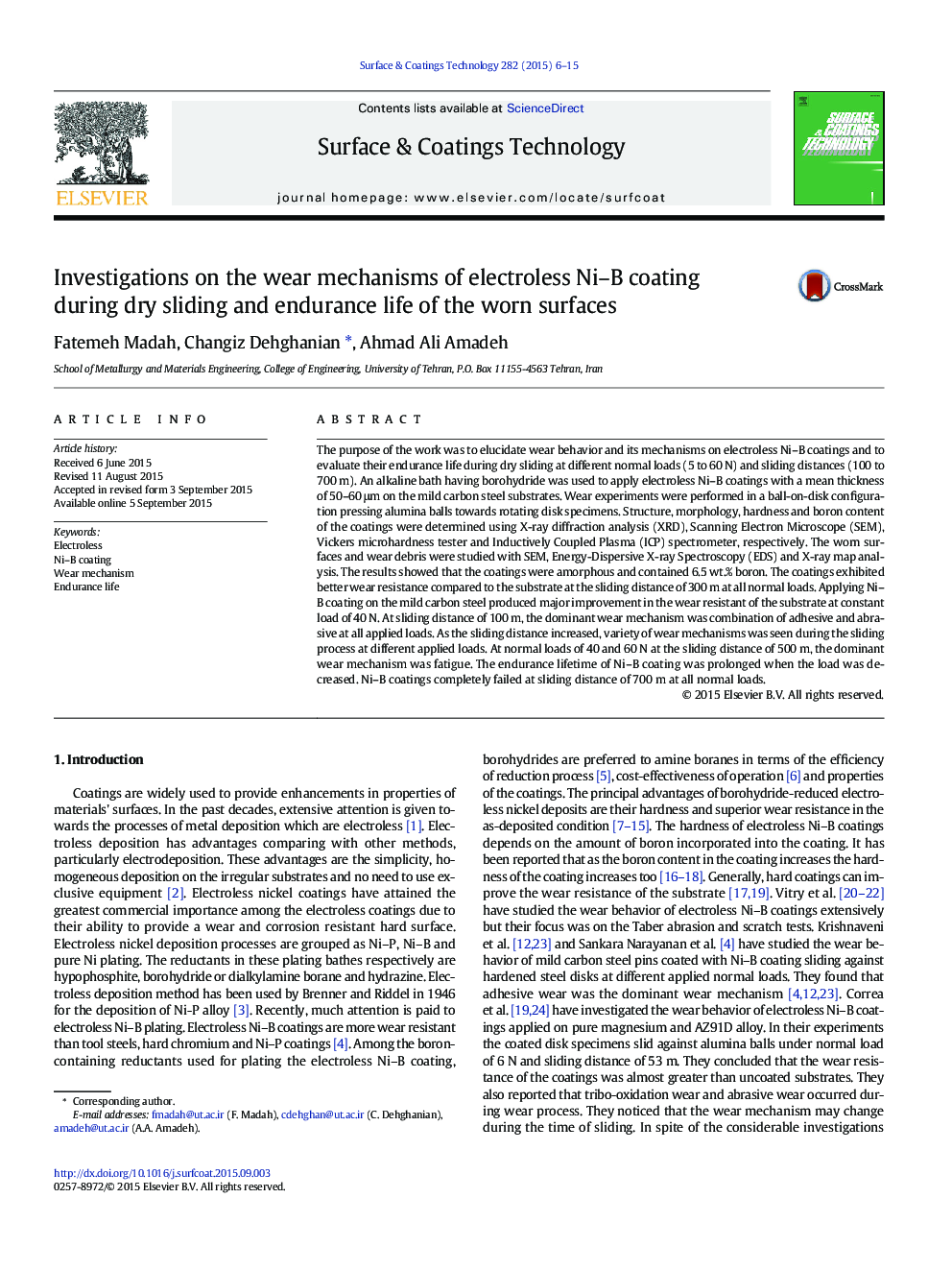| Article ID | Journal | Published Year | Pages | File Type |
|---|---|---|---|---|
| 1656727 | Surface and Coatings Technology | 2015 | 10 Pages |
Abstract
The purpose of the work was to elucidate wear behavior and its mechanisms on electroless Ni-B coatings and to evaluate their endurance life during dry sliding at different normal loads (5 to 60 N) and sliding distances (100 to 700 m). An alkaline bath having borohydride was used to apply electroless Ni-B coatings with a mean thickness of 50-60 μm on the mild carbon steel substrates. Wear experiments were performed in a ball-on-disk configuration pressing alumina balls towards rotating disk specimens. Structure, morphology, hardness and boron content of the coatings were determined using X-ray diffraction analysis (XRD), Scanning Electron Microscope (SEM), Vickers microhardness tester and Inductively Coupled Plasma (ICP) spectrometer, respectively. The worn surfaces and wear debris were studied with SEM, Energy-Dispersive X-ray Spectroscopy (EDS) and X-ray map analysis. The results showed that the coatings were amorphous and contained 6.5 wt.% boron. The coatings exhibited better wear resistance compared to the substrate at the sliding distance of 300 m at all normal loads. Applying Ni-B coating on the mild carbon steel produced major improvement in the wear resistant of the substrate at constant load of 40 N. At sliding distance of 100 m, the dominant wear mechanism was combination of adhesive and abrasive at all applied loads. As the sliding distance increased, variety of wear mechanisms was seen during the sliding process at different applied loads. At normal loads of 40 and 60 N at the sliding distance of 500 m, the dominant wear mechanism was fatigue. The endurance lifetime of Ni-B coating was prolonged when the load was decreased. Ni-B coatings completely failed at sliding distance of 700 m at all normal loads.
Keywords
Related Topics
Physical Sciences and Engineering
Materials Science
Nanotechnology
Authors
Fatemeh Madah, Changiz Dehghanian, Ahmad Ali Amadeh,
